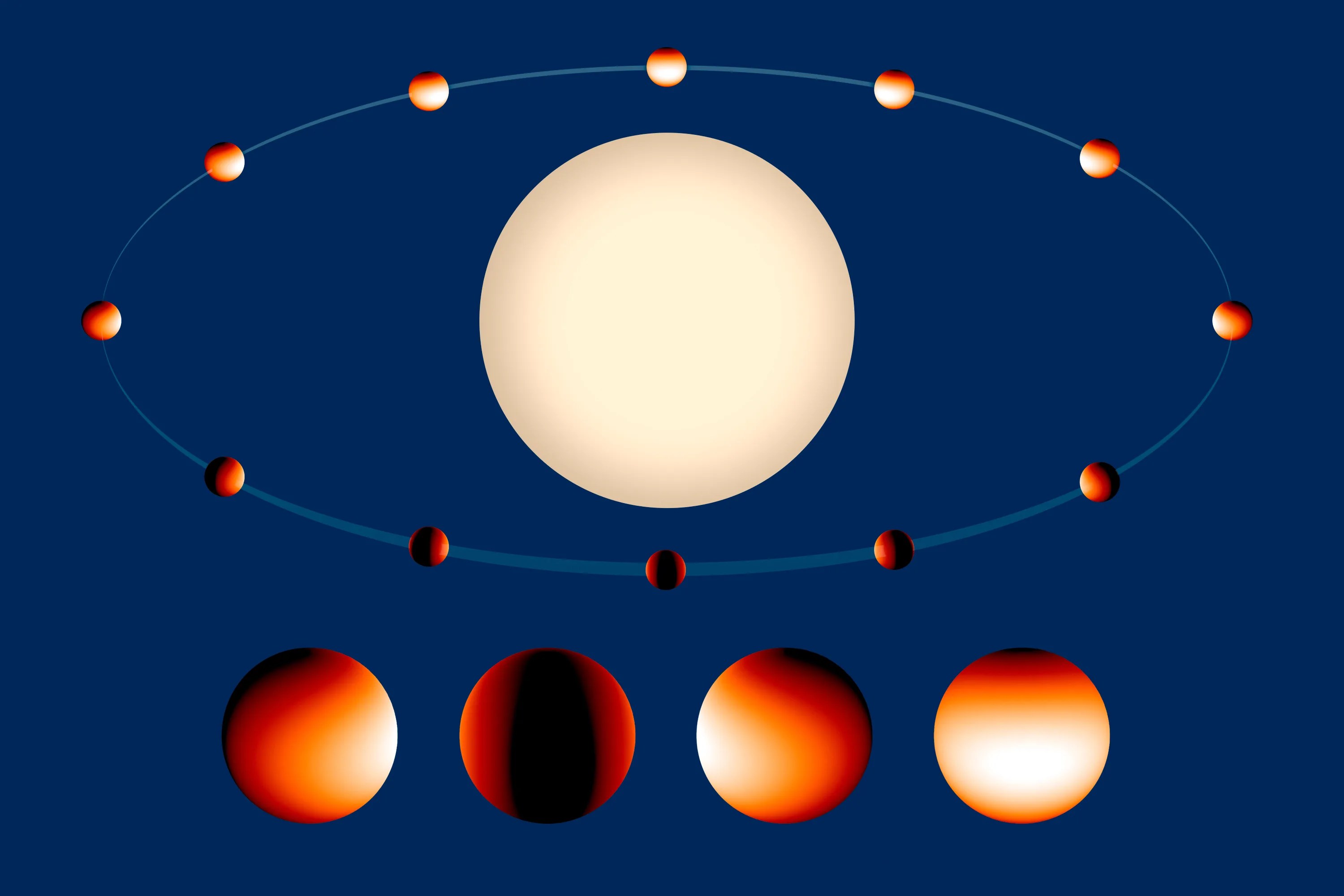
Hubble WASP-43b Temperature Map
This is a temperature map of exoplanet WASP-43b. The gas giant planet orbits very close to its parent star with a period of 19.5 hours. Because the planet keeps one side facing its star, there are huge temperature extremes between the day and night sides. The white-colored region on the daytime side is 2,800 degrees Fahrenheit. The nighttime-side temperatures drop below 1,000 degrees Fahrenheit. This steep gradient is in stark contrast to the predominantly uniform temperatures of the solar system's giant planets. Infrared observations with the Hubble Space Telescope measured how temperatures change with both altitude and longitude on the planet.
Credits: NASA, ESA, and K. Stevenson, L. Kreidberg, and J. Bean (University of Chicago)
Image CreditNASA, ESA, and K. Stevenson, L. Kreidberg, and J. Bean (University of Chicago)
Size640x427px
